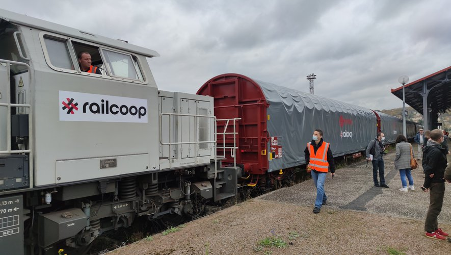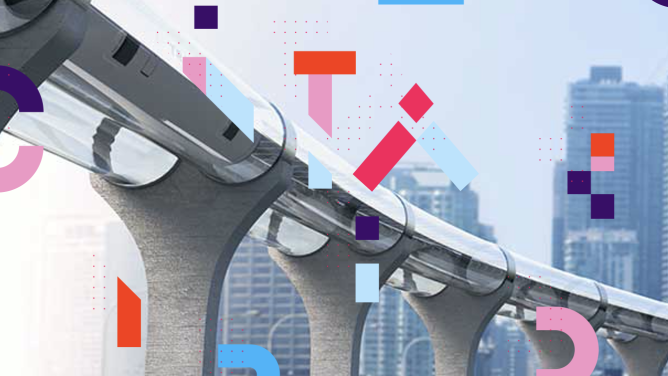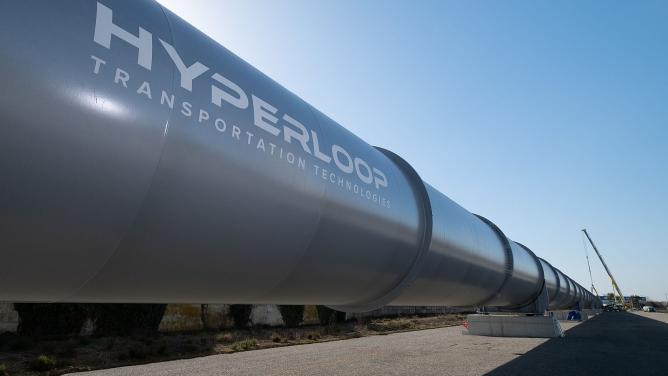Rail transport: low-carbon mobility, limited modal share
Trains are often presented as a virtuous mode of transport with relatively low emissions – and a quick overview of the figures available confirms this hunch. The most comprehensive document on the topic is undoubtedly the Bilan Carbone global de la Ligne à Grande Vitesse Rhin-Rhône (Carbon Footprint Review for the Rhine-Rhône High-Speed Line), produced by the ADEME (the French national Agency for the Ecological Transition). After analysing the complete lifecycle of a TGV high-speed rail line, a modal shift from road transport to rail would see estimated savings of four million tonnes of CO2 equivalents over 30 years. The report also breaks down emissions by item: traction energy represents 53% of emissions, civil engineering 20%, railway infrastructure construction 22%, and design and maintenance together amount to 5%. Compared to other modes of transport (apart from walking and cycling), rail has extremely low emissions. Again according to the ADEME, 1,000 km by TGV represents 1.73 kg CO2e per passenger, compared to 192 by car or 102 by plane! Meanwhile, according to the WEF, rail transport now represents 1% of global transport-related emissions, for 7% of passengers transported and 8% of world freight.
New Energy for the sector
The future of rail report published by the IEA shows that three-quarters of passenger rail transport activity takes place on electric trains, making the rail sector the first mode of transport that is widely electrified today. That said, the disparities remain significant (97% in Japan, 54% in India, 28% in Africa) and the electrification of all “local lines” is not always an option. In France, the SNCF is using the term “frugal electrification” to describe how lines currently operating on fossil fuels will be partially electrified thanks to battery power.
Developments in hydrogen energy makes greater autonomy for electric motors more imaginable. Alstom’s Coradia iLint train recently broke a record in Germany by traveling 1,175 km without refuelling. Hydrogen train projects are appearing all over the world: Toyota and Hitachi have joined forces in Japan, Siemens has also unveiled its Mireo Plus H model, and the more experimental Sky Train developed in China claims to run power-free thanks to a system of magnets.
The “small train” boom?
When we talk about trains, the media is cannibalised by the topic of ultra-high speed made popular by Elon Musk’s Hyperloop promise (on which Leonard recently made a nuanced analysis). Perhaps the future lies in less spectacular designs that are more suitably adapted to real rail transport issues. One of these concerns rural areas with low passenger rates, often considered as being as doomed. The urban legend of the Japanese rail line which remained open for one single student illustrates the economic difficulties of such isolated lines. The SNCF recently unveiled a range of new experimental vehicles in hopes of rising to the challenge. The aim behind its Train Léger Innovant is to adapt to the low traffic of local lines while limiting the need for maintenance on the infrastructure. In a similar vein, the Draisy prototype is designed to offer more flexibly, with passenger destinations offered “à la carte”.
Zoom : Railcoop
Apart from technology, revitalising local lines could become possible thanks to innovations in usage. In France, the most striking example of this is undoubtedly Railcoop, the first cooperative railway company in Europe. It mobilises citizens, local authorities, companies and associations in order to strengthen the rail network. It already circulates freight and plans to open its first passenger line between Bordeaux and Lyon in the near future.

Inter-modality reinventing itself
By definition, rail travel is not a particularly flexible mode of transport. As such, last-mile mobility is a major subject for rail infrastructure operators. City centre stations have now become mobility hubs offering all kinds of multimodal options. The integration of bicycle parking facilities in Dutch stations – in particularly the one in The Hague – is representative of the phenomenon. However, services are less developed in rural areas, which struggle to deal with the question of how to cover the last mile other than by private car. The example of the self-driving shuttledeveloped by Ioki (a subsidiary of Deutsche Bahn) in Bad Birnbach perhaps foreshadows a future model for public transport in more sparsely populated areas. Meanwhile, Flexy (developed by SNCF) and Milla follows the same logic by offering a vehicle capable of using both road and rail!
Autonomous trains before autonomous cars?
The railway sector is a little more discreet than the automobile world when it comes to automation, but nevertheless the former is working to make trains autonomous, facilitated by the presence of rails. In Germany, the safe.trAIn project from Siemens shall run until 2024. Its aim is to optimise train traffic and therefore the use of infrastructure thanks to artificial intelligence technology. It also aims to pave the way for autonomous trains to run on the general network and no longer only on closed circuits. Meanwhile, at the SNCF, autonomous train prototypes have beenannounced for 2023 with production in 2025: freight trains will be developed first with Alstom, Altran, Hitachi and Apsys, followed by passenger trains with Bombardier, Bosch, Spirops and Thales. When it comes to the technology, the devices used are relatively similar to those developed for cars, such as LIDAR, which allows for perception sensing of signals around the track. Meanwhile, the EU-funded SAMIRA system relies on technology for autonomous manoeuvring for freight.
Digital tech and digital twins
Infrastructure maintenance is a fundamental task for rail operators. And thanks to predictive maintenance and digital twins, they’ve discovered new allies. In France, on the Tours-Bordeaux high-speed line, Leonard’s AI program enabled LISEA (concession owner) and MESEA (maintenance contractor) to optimise performance through predictive maintenance. They achieved this by developing an in-house measurement wagon called DRING capable of collecting high-quality track data every week, used to model rail track degradation. As a result, this led to a better understanding of the evolution of the infrastructure, reduced maintenance times and limited the number of maintenance operations.
Overall, train transport is reinventing itself by trying to erase its main weaknesses: an inflexible network and very high operating costs. For this, it can count on the rapid development of new energies, new uses and high-tech digital infrastructures.


